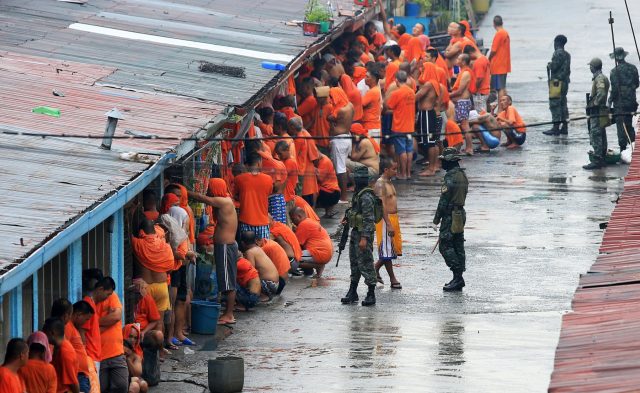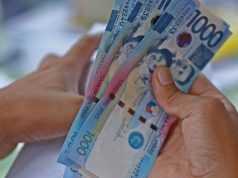
MANILA – With thousands of new detainees on drug-related cases having been crammed the past several months into jails, the food budget of the Bureau of Jail Management and Penology (BJMP) could run out by mid-October, leaving authorities scrambling for resources for the last six weeks of the year.
The warning was issued Wednesday by Senate President Pro Tempore Ralph Recto, who said about 150,000 inmates in 446 BJMP-run jails in the country may face “a forced last quarter diet” as their food budget is expected to run out by mid-October given the surge in the number of detainees locked up for drug offenses.
Recto said BJMP’s food allowance budget of P2.32 billion this year was based on an inmate population of 106,280, but the latter had already soared to 142,282 by June 30.
The number of BJMP inmates is projected to breach the 150,000 mark by the end of this month.
Recto said government has no option but to augment the budget of the BJMP. “We are supposed to run humane jails, not hunger camps.”
An inmate’s daily food budget is set at P60. “Ito ay pagkakasyahin sa tatlong kainan. Ang resulta ay super preso tipid meals.”
Swelling the inmate population is the steady stream of arrested users or peddlers of illegal drugs, BJMP data showed.
At present, two in three BJMP inmates are charged with violating Republic Act 9165, the Comprehensive Dangerous Drugs Act of 1992, the senator said.
As of June 30, BJMP records show that 97,321 inmates were in for “drug use, or possession, or trafficking, or sale, or manufacturing,” Recto said. “That’s more than six Araneta Coliseums-full of mostly alleged shabu sellers or users.”
This rapid rise, Recto said, is putting a strain on state resources as taxpayers cough up P81,732 to feed, house and guard one BJMP inmate annually.
It has also led to jail congestion, with BJMP reporting a 600 percent congestion rate. “Kulang na sa pagkain, kulang pa ang espasyo,” Recto said.
“The total national cell space of 97,789 square meters is ideal for 20,793 inmates; ngayon parang corned beef na siniksik doon ang 142,000 plus na preso,” Recto said.
“Sa report ng BJMP, mayroong mga jails na 3,590 percent, 2,603 percent, 2,494 percent congestion rate. Ibig sabihin, imbis na apat na preso lang ang kasya, 159 ang patayong natutulog sa 20 square meters na selda, tulad doon sa isang jail,” Recto said.
Recto said the BJMP inmate population has doubled since 2013.
Bureau of Corrections, too
And the BJMP is just one of the three agencies holding prisoners, Recto pointed out.
The Bureau of Corrections keeps watch over 41,258 sentenced felons in eight penitentiaries, while Philippine National Police runs 458 town jails in addition to precinct-level “holding cells.”
As if these were not enough, Recto said government should brace for a steep climb in the BJMP population due to the government’s relentless anti-drugs campaign.
“From January to June, ang nahuli ng pulis dahil sa RA 9165 ay 127,760. Ngunit ang monthly take-in ng BJMP ay 8,000 lang. Ibig sabihin, marami pa ang nasa pipeline,” Recto said.
Recto said most of “RA 9165” detainees in BJMP jails were male (83,281) or between the ages of 22 and 39 (56,469). Women detained for narcotic violations totalled 13,956, including 63 girls below 17 years of age.
At the other end of the age spectrum are “senior inmates”, with 1,110 of them, including 224 women, standing trial for drug offenses.







